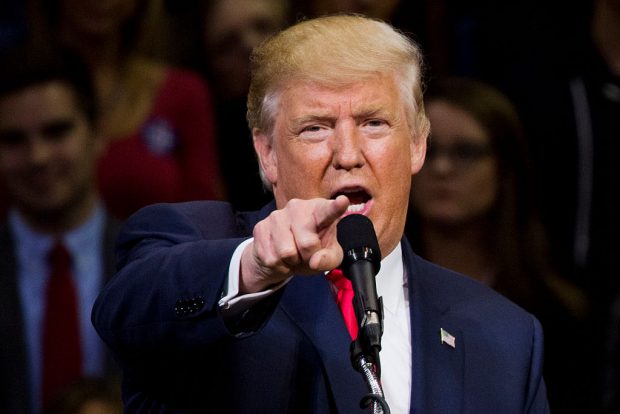Donald Trump has a method for making his Cabinet picks. Parade the contenders in and out of Trump Tower and its waiting TV cameras. Leak and Tweet their performance ratings (‘very good meeting’). And then, once the suspense has reached something approaching a reality TV show, announce the hire on social media. And as the administration of the president-elect takes shape, it is also abundantly clear that Trump has a type.
Let’s call them the G-men. Because they are mostly men, and mostly Goldman, generals and gazillionaires, as one arch critic put it. On Tuesday, Rex Tillerson was named as Trump’s pick for Secretary of State, the latest super-wealthy businessman to join the ranks. As chief executive of ExxonMobil he has racked up a personal fortune of about £226m but that is decidedly modest by the standards of this Cabinet. Wilbur Ross, the financier and pick for Secretary of Commerce, comes in at about £1.6bn and Betsy DeVos, slated to take over at education, can draw on a family fortune of more than $2.9bn.
So far there are 12 billionaires or multimillionaires lined up (Senate confirmation pending) for Cabinet posts or other senior administration jobs. There are the bankers, with three figures who can include the Wall Street firm Goldman Sachs on their CVs And then there are the generals – three so far, including James ‘Mad Dog’ Mattis nominated as Secretary of Defence.
It is almost as if he is building the Cabinet in his own image: bold corporate leaders and the sort of military men he imagines he would have been (if he hadn’t managed to defer his call-up five times). All swash and buckle. They are all ‘Trumpian’ picks and exactly what he said he would do during the campaign when he promised to bring in the very best people to shake up Washington. They may be figures from outside the political sphere, unconventional by the standards of previous administrations, but perhaps the sorts of chief executives needed to overhaul departments and inject fresh thinking.
So there’s a climate change sceptic – Scott Pruitt – earmarked for the Environment Protection Agency. And an opponent of Obamacare – Tom Price – at health. That all comes with its own risks. Can the likes of Linda McMahon, a former WWE executive perhaps best known for chugging beer in a wrestling ring with ‘Stone Cold’ Steve Austin, transfer skills from a tight-knit entertainment business run with her husband to the Small Business Administration? Can executives used to hiring and firing their own teams deal with the bureaucracy of inertia-riddled government departments? Getting a proposal past a board of 12 is one thing – how about getting it through Congress?
Then there is the other question. Trump may have promised during the campaign to ‘drain the swamp’ of Washington, ending the crony culture of insiders and special interests that has stopped America winning, but his chosen army of generals, billionaires and bankers are hardly anti-establishment revolutionaries. Many may be political neophytes, but they represent the same old America. They are predominantly white, male and ageing. At least nine picks are in their sixties.
And if Trump looked like a new kind of populist Republican during the campaign (i.e. one that had been a Democrat until recently) he is building a conventionally conservative cabinet, with figures opposed to regulation and committed to small government. Ted Cruz would not disagree with too much of what’s on show. So although Trump’s G-men may have taken a different route to power, it is hard to see his nascent administration as a populist middle finger to the status quo. It feels like Trump has simply slapped his brand on the same old Washington.






Comments